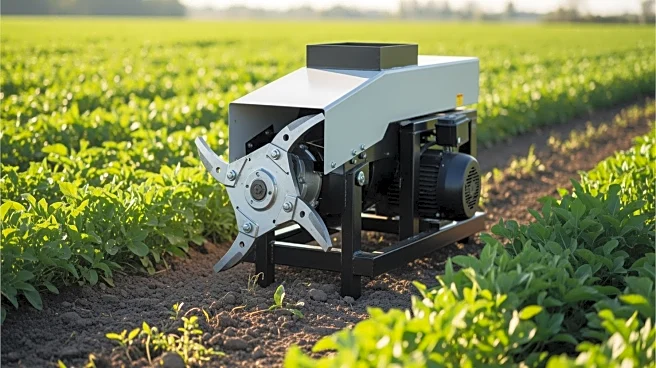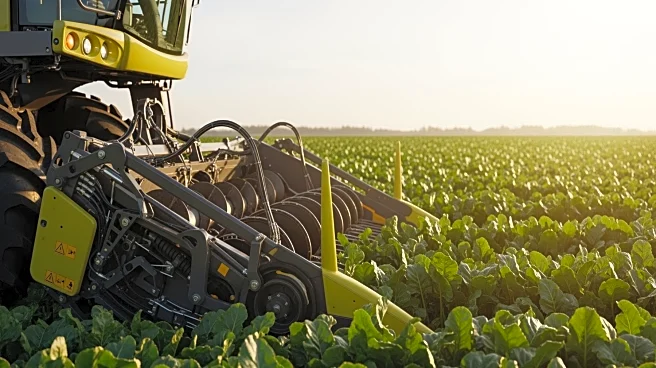What's Happening?
The United States agricultural shredder market is projected to grow significantly from USD 1.9 billion in 2022 to USD 2.7 billion by 2030, with a compound annual growth rate (CAGR) of 4.4%. This growth is fueled
by increasing agricultural activities, demand for efficient crop residue management, and sustainable farming practices. Technological advancements, such as the integration of IoT and smart technologies in shredders, are enhancing operational efficiency and attracting farmer adoption, particularly in developed markets. North America holds a significant market share, driven by advanced farming technologies and sustainability policies like the US Farm Bill. The adoption of electric-powered shredders is rising due to environmental regulations and a growing emphasis on reducing carbon footprints.
Why It's Important?
The expansion of the agricultural shredder market is crucial for the U.S. agricultural sector, as it supports sustainable farming practices and efficient crop residue management. The integration of smart technologies in shredders enhances operational efficiency, which is vital for farmers seeking to optimize residue management and prepare fields for no-till planting. This technological shift not only aids in reducing labor costs but also aligns with environmental goals by promoting the use of electric-powered machines over traditional fuel-powered ones. The market growth reflects broader trends in agriculture towards mechanization and sustainability, which are essential for meeting future food production demands and environmental standards.
What's Next?
The market is expected to continue its growth trajectory, with ongoing trends in precision agriculture and the adoption of advanced shredder models equipped with sensors and GPS/AI compatibility. These innovations will likely drive further demand for agricultural shredders, as farmers increasingly seek efficient solutions for residue management. Additionally, government incentives promoting green agricultural technologies and organic farming practices are anticipated to support market expansion. Industry consolidation through mergers and acquisitions may also enhance innovation and regional presence, further boosting market growth.
Beyond the Headlines
The shift towards sustainable farming practices and technological advancements in agricultural shredders may have long-term implications for the U.S. agricultural sector. As farmers adopt more efficient and environmentally friendly technologies, there could be a reduction in the reliance on chemical fertilizers, promoting soil health and biodiversity. This transition may also influence agricultural policies and funding priorities, encouraging further investment in green technologies and sustainable farming methods.












